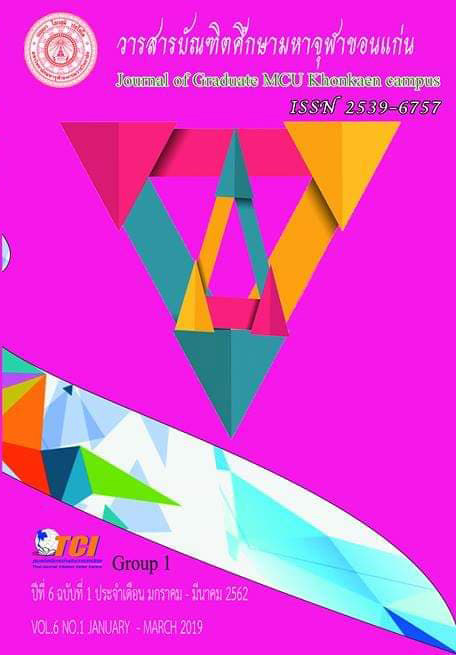The Interpretation of The Buddhist Language in Prince Sudhana- ManohrãJãtaka
Main Article Content
Abstract
The objectives of the thesis are divided into three; (1) to study concept and theory of textual hermeneutics in Buddhism. (2) to study ordinary
language inPrince Sudhana - ManohrãJãtaka and (3) to interpretation of The Buddhist Language in Prince Sudhana - ManohrãJãtaka This was a quality research. which was analysis textual in Buddhism i.e. the Tipitaka, commentaries, jataka, a book of Thai religious versein Prince Sudhana, thesis and theory of textual hermeneutics. It was a documentary research and descriptive analysis of the results and knowledge synthesis by inductive method.
The research results were as follows:
1. The concept and theory of textual hermeneutics in Buddhism are consist of Literary interpretation, Interpretation approach by tale.
Interpretation Approach through Simile, Allegorical Hermeneutics, and Interpretation Methods of Convention and Ultimate Truths.
2. This thesis was interpretation according to Post Modern Paradigm in prince Sudhana – Manohrã jataka. Prince Sudhana – Manohrã jataka was
the old tale over 1500 years old by appearing the evidence in MahãvastuStripture of Mahayana Buddhism. It has concept on the Upaya
jataka showing which intrigue latent in the ordinary language. It has to interpretation into Buddhist language which it was intent of the author
3. The depth structure of this jataka consist of the way to graduate path of Bodhisattva which concerned Bodhinãņa : Nana of the four noble truths and the three characteristics. The matter subject of this jataka were Indriya Parami i.e. (1) the 6 Indriyas: Eyes Ears Nose Tongue and Body, its simile to Prince Sudhana and Mind simile Mrs. Manohra. (2) restraint of sense: Indriya-Samvara simile like Hastilinga bird. (3) the 5Indriyas: the five controlling faculties simile Eagle (4) annindriya: the faculty of highest knowledge simile to Indra and (5) aññatãvindriya: the faculty of one who knows’ simile to Prince Sudhana and Manohrã can fly like to Eagle flied to
Uttara Panjala.
Article Details
References
Teaching. Bangkok: Dharmasapa.
Chutamas Sonkanok. (1990). A Comparative Study of the Lanna, Sipsong
Panna and Kengtung Versions of the Folktale : PhraSuthon-Nang
Manora. Graduate School: Silpakorn University.
Jaini, Padmanabh S. (1966). The Story of Sudhana and Manoharã: An
Analysis of the Texts and the Borobudur Reliefs. Bulletin of the
School of Oriental and African Studies. London: University of
London.
Parud Boonsriton. (2007). A Critical study of The Urangadhatunidana: It,s
Religious Language and Social Influence. Graduate School:
Mahachulalongkornrajavidyalaya University.
Sowit Bamrungphak. (2011). Buddhism and Hermeneutics. Graduate School:
Mahachulalongkornrajavidyalaya University Khonkaen Campus.
Sowit Bamrungphak. (2017). Atta (Self) in Buddhist Saying and Anatta
Philosophy. Humanities & Social Sciences, 34(1), 270-290.

